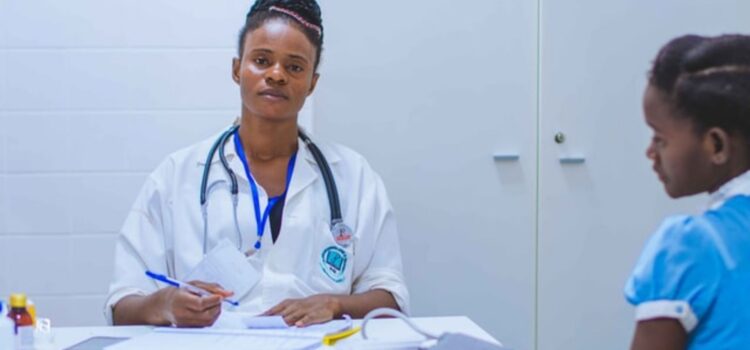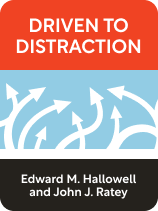

This article is an excerpt from the Shortform book guide to "Driven to Distraction" by Edward M. Hallowell and John J. Ratey. Shortform has the world's best summaries and analyses of books you should be reading.
Like this article? Sign up for a free trial here.
How do you diagnose ADHD? What are the different steps of an ADHD diagnosis?
In Driven to Distraction, Edward M. Hallowell and John J. Ratey explain how you can obtain an ADHD diagnosis if you feel like you have the condition. Two major things you need to do to get diagnosed are to go through testing and rule out other conditions.
Continue reading to learn how to get diagnosed with ADHD, if necessary.
Obtaining a Diagnosis
How do you diagnose ADHD? According to the authors, the process of diagnosis begins with the patient’s decision to seek help for the problems they’re having. In children, this can be prompted by academic or behavioral difficulties. In a school environment, it’s easy to spot the traits of ADHD in children, especially if there’s an adult in the school who’s familiar with the condition. The authors estimate that at least 5% of children may have ADHD, though underdiagnosis may be dragging this statistic down.
(Shortform note: There is debate about diagnosis rates of ADHD: Sources generally agree that it’s frequently misdiagnosed, with some saying it’s overdiagnosed—that people who don’t meet the criteria are receiving the diagnosis—and others saying it’s underdiagnosed—that people who meet the criteria are given no diagnosis or are diagnosed with something else.)
According to the authors, parents who seek ADHD treatment for their children eventually ask if they themselves might have it. Since it can be passed down genetically, it’s probable that at least one parent of a child with ADHD will also have ADHD. Often they’ve received a different diagnosis for a condition that looks like ADHD but have had limited success with the treatment, since treatment for ADHD is so different from treatment for conditions that may present similarly.
(Shortform note: Mothers of children with ADHD who seek treatment for their child are particularly likely to discover their own diagnosis through that process. This is because boys are more likely to receive an ADHD diagnosis in childhood than girls are, possibly because girls are less likely to exhibit the more disruptive symptoms of ADHD like hyperactivity. So women with ADHD frequently don’t receive their diagnosis until they’re adults.)
Indeed, it can be hard for an adult to receive an accurate ADHD diagnosis. This is because there’s no equivalent environment like school that can act as a reliable method of screening. This can make an adult ADHD diagnosis come as a big surprise, and people often only consider they might have ADHD by hearing about it from others who have it. The authors estimate that ADHD affects at least 10 million adults in America.
(Shortform note: Some people with ADHD are successful in school, but their symptoms become a problem when they enter the workforce, especially if they are undiagnosed. Additionally, unlike schools, companies are not necessarily required to provide accommodations for ADHD. So even if you do get an ADHD diagnosis, your company may not help you manage it.)
According to the authors, many patients express extreme relief upon learning they have ADHD, as they have spent their lives feeling like they’re broken or bad for struggling with things that are supposed to be “easy” or “intuitive,” when in reality their brains naturally function in a way that makes these things difficult. Learning there’s a name, community, and treatment for these problems can be liberating and validating, and it’s the first step in treating them.
(Shortform note: Social media has played a major role in spreading awareness about ADHD, and also providing a community for those who have it. Many people begin their journey to an ADHD diagnosis by hearing or reading something from a social media influencer.)
1. Go Through Testing
The authors say that once a diagnosis is suspected, the doctor will begin testing. There’s no one test that can definitively “prove” that someone has ADHD. Testing consists mainly of examining the patient’s history through interviews, and it’s ideal to have at least one other person close to the patient who can be consulted, as well. The authors point out that people with ADHD typically aren’t very good at self-observation, so the insight from others in the patient’s life can be the most revealing.
A patient’s history includes but is not limited to:
- Any history in the patient’s family of ADHD or of related conditions like substance abuse, mood disorders, or learning disabilities.
- The patient’s developmental history as a child, such as when they began walking and talking—delays or early development in some areas can be indicative of ADHD.
- Behavior at home, such as disorganization, need for routine, or unusual need for stimulation.
- Academic history, such as teacher reports, the patient’s feelings toward school, and level of achievement versus perceived ability or potential.
- Professional history, such as under- or over-performance, conformity to workplace rules and expectations, and high creativity.
- Social history, such as difficulty understanding or being understood by others and ability to maintain relationships.
2. Rule Out Other Conditions
The authors emphasize the importance of ruling out other conditions before diagnosing ADHD, as there are several conditions that can look like or overshadow ADHD. There are also many conditions that can co-occur with ADHD. It’s important to distinguish between ADHD and these conditions to select the most effective treatments.
(Shortform note: Misdiagnosis is especially likely if the doctor only focuses on one or a few symptoms and ignores others. Diagnosing someone based only on their most obvious symptoms can lead them down the wrong treatment paths.)
Conditions that can co-occur with, be mistaken for, or mask the symptoms of ADHD include:
Depression and anxiety. Both of these can occur as secondary symptoms of ADHD or as separate conditions from it. If depression or anxiety is a secondary symptom, treating the ADHD can help ameliorate it, but if it’s a co-occurring disorder then it will likely need a separate treatment regimen.
(Shortform note: Depression and anxiety co-occur with ADHD at extremely high rates. Approximately one-third of people with ADHD have also suffered from depression, and half of people with ADHD have an anxiety disorder.)
Substance abuse. This may also be a secondary symptom of ADHD or its own disorder. Some people with ADHD find that substances like alcohol or drugs mitigate their undesirable symptoms, which can lead to excessive use, dependence, or addiction. If it’s a secondary symptom, treating the ADHD can potentially resolve the substance use problem, but if it occurs as a different disorder it may need a separate treatment.
(Shortform note: People with ADHD often use substances to self-medicate for their symptoms, which makes treating the substance use tricky. People self-medicate because it works, meaning the positive aspects of controlling their symptoms outweigh the negative effects of the substance use. In cases where substances—marijuana, for instance—aren’t abused, they can be an effective way to manage ADHD.)
Certain personality disorders. Some aspects of ADHD may mirror symptoms of personality disorders that would require a separate diagnosis. The emotional difficulties associated with ADHD, for example, can look similar to the extreme mood changes of bipolar disorder. The feelings of rage and sensitivity to rejection can look like borderline personality disorder. The impulsivity and extreme frustration can look like antisocial personality disorder. In all of these cases, a person with ADHD may have been misdiagnosed with one of these disorders, leading to ineffective treatment.
Other learning disorders. The authors specifically discuss dyslexia, which they say is the most common learning disorder, as well as autism spectrum disorder, and other cognitive disorders. They estimate that the rate of co-occurrence between ADHD and other learning disorders, depending on how they’re defined, ranges between 10% and 80%.
The authors also emphasize that it’s important to avoid diagnosing yourself and that you should always consult with a professional if you suspect you have ADHD.
(Shortform note: While an official diagnosis is ideal, it may not be accessible to everyone with ADHD. For one thing, the specific tasks involved in getting a diagnosis—researching providers, setting appointments and sticking to them, and remembering personal history—also happen to be tasks that are difficult for people with ADHD. Additionally, high healthcare costs and a lack of insurance can make diagnosis inaccessible to many, and it may be difficult or impossible to find a doctor knowledgeable about the condition in your area.)

———End of Preview———
Like what you just read? Read the rest of the world's best book summary and analysis of Edward M. Hallowell and John J. Ratey's "Driven to Distraction" at Shortform.
Here's what you'll find in our full Driven to Distraction summary:
- What ADD is, theories on the possible causes, and potential treatments
- How our knowledge of ADD has changed since the book’s republication in 2011
- Tips for how to minimize your negative symptoms and make the most of your strengths






